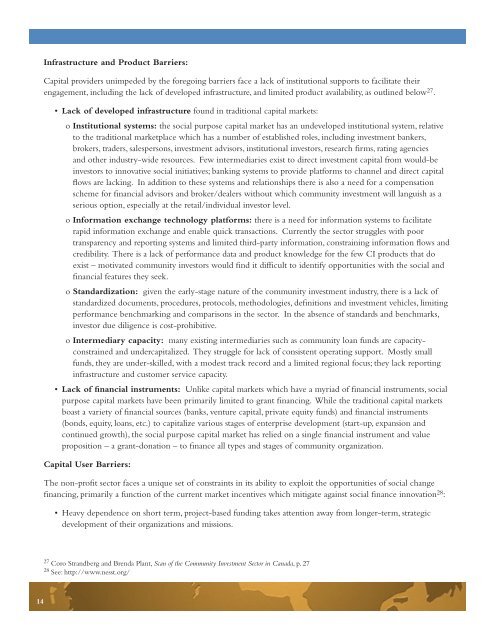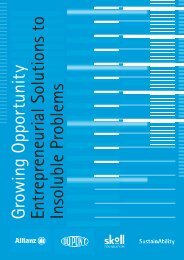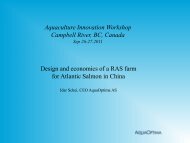The Social Purpose Capital Marketplace - Tides Canada Foundation
The Social Purpose Capital Marketplace - Tides Canada Foundation
The Social Purpose Capital Marketplace - Tides Canada Foundation
Create successful ePaper yourself
Turn your PDF publications into a flip-book with our unique Google optimized e-Paper software.
Infrastructure and Product Barriers:<br />
<strong>Capital</strong> providers unimpeded by the foregoing barriers face a lack of institutional supports to facilitate their<br />
engagement, including the lack of developed infrastructure, and limited product availability, as outlined below 27 .<br />
• Lack of developed infrastructure found in traditional capital markets:<br />
o Institutional systems: the social purpose capital market has an undeveloped institutional system, relative<br />
to the traditional marketplace which has a number of established roles, including investment bankers,<br />
brokers, traders, salespersons, investment advisors, institutional investors, research firms, rating agencies<br />
and other industry-wide resources. Few intermediaries exist to direct investment capital from would-be<br />
investors to innovative social initiatives; banking systems to provide platforms to channel and direct capital<br />
flows are lacking. In addition to these systems and relationships there is also a need for a compensation<br />
scheme for financial advisors and broker/dealers without which community investment will languish as a<br />
serious option, especially at the retail/individual investor level.<br />
o Information exchange technology platforms: there is a need for information systems to facilitate<br />
rapid information exchange and enable quick transactions. Currently the sector struggles with poor<br />
transparency and reporting systems and limited third-party information, constraining information flows and<br />
credibility. <strong>The</strong>re is a lack of performance data and product knowledge for the few CI products that do<br />
exist – motivated community investors would find it difficult to identify opportunities with the social and<br />
financial features they seek.<br />
o Standardization: given the early-stage nature of the community investment industry, there is a lack of<br />
standardized documents, procedures, protocols, methodologies, definitions and investment vehicles, limiting<br />
performance benchmarking and comparisons in the sector. In the absence of standards and benchmarks,<br />
investor due diligence is cost-prohibitive.<br />
o Intermediary capacity: many existing intermediaries such as community loan funds are capacityconstrained<br />
and undercapitalized. <strong>The</strong>y struggle for lack of consistent operating support. Mostly small<br />
funds, they are under-skilled, with a modest track record and a limited regional focus; they lack reporting<br />
infrastructure and customer service capacity.<br />
• Lack of financial instruments: Unlike capital markets which have a myriad of financial instruments, social<br />
purpose capital markets have been primarily limited to grant financing. While the traditional capital markets<br />
boast a variety of financial sources (banks, venture capital, private equity funds) and financial instruments<br />
(bonds, equity, loans, etc.) to capitalize various stages of enterprise development (start-up, expansion and<br />
continued growth), the social purpose capital market has relied on a single financial instrument and value<br />
proposition – a grant-donation – to finance all types and stages of community organization.<br />
<strong>Capital</strong> User Barriers:<br />
<strong>The</strong> non-profit sector faces a unique set of constraints in its ability to exploit the opportunities of social change<br />
financing, primarily a function of the current market incentives which mitigate against social finance innovation 28 :<br />
• Heavy dependence on short term, project-based funding takes attention away from longer-term, strategic<br />
development of their organizations and missions.<br />
27 Coro Strandberg and Brenda Plant, Scan of the Community Investment Sector in <strong>Canada</strong>, p. 27<br />
28 See: http://www.nesst.org/<br />
14
















